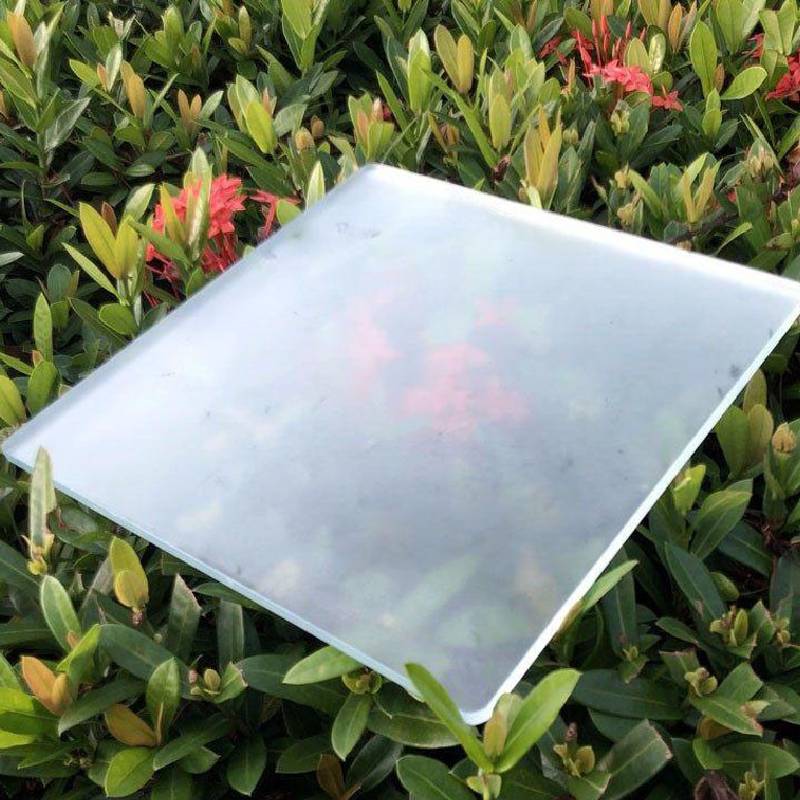Understanding All Types of Tempered Glass An Overview
Tempered glass, also known as toughened glass, is a type of safety glass that has been processed by controlled thermal treatments to increase its strength compared to normal glass. This treatment minimizes the chances of breakage and ensures that, if it does shatter, it breaks into small, blunt pieces that are less likely to cause injury. In this article, we explore the various types of tempered glass, their properties, applications, and advantages, helping you to better understand this versatile material.
What is Tempered Glass?
Tempered glass is made from standard glass that is subjected to a heating and rapid cooling process—also known as tempering. During this process, temperatures can reach up to 620 degrees Celsius (about 1,148 degrees Fahrenheit). As the glass is heated, it expands, and during the rapid cooling phase, the outer surface cools faster than the inner layers. This creates a state of compressive stress on the surface, which significantly enhances its strength.
Types of Tempered Glass
1. Standard Tempered Glass
The most common type, often used in residential and commercial buildings. It is available in various thicknesses and sizes. Standard tempered glass is ideal for windows, doors, and shower enclosures due to its strength and safety features.
2. Laminated Tempered Glass
This variant consists of two or more layers of glass bonded together with an interlayer, typically made from polyvinyl butyral (PVB). This type of glass offers enhanced safety since the interlayer holds the glass in place—even upon breakage. Laminated tempered glass is perfect for use in skylights, glass floors, and areas where extreme weather conditions are a factor.
3. Low-E Tempered Glass
Low-emissivity (Low-E) tempered glass is coated with a thin layer of silver or another metallic material, which reflects heat while allowing light to pass through. This type of glass is energy-efficient, making it a preferred choice for commercial and residential buildings aiming to reduce energy consumption and improve insulation.
all types of tempered glass
4. Reflective Tempered Glass
This glass is coated with a reflective material that can help reduce solar heat gain while maintaining daylight illumination. Reflective tempered glass is often used in buildings to minimize glare and enhance privacy. It is widely employed in commercial facades and high-rise structures.
5. Frosted Tempered Glass
Frosted tempered glass is created by sandblasting or acid etching the surface of the glass, giving it a translucent finish. This type is commonly used in interior spaces where privacy is desired, such as in bathrooms, offices, and conference rooms.
6. Colored Tempered Glass
Available in a variety of colors, colored tempered glass is manufactured by adding pigments during production. This glass not only provides aesthetic appeal but is also used in applications requiring UV protection. It is often used in curtain walls, balustrades, and decorative features.
Benefits of Tempered Glass
Tempered glass carries several advantages, making it a popular choice for various applications
- Safety Its ability to shatter into small pieces instead of sharp shards makes it safer in cases of breakage.
- Durability Tempered glass is up to five times stronger than standard glass, making it resistant to impact and thermal stress.
- Versatility It can be cut, drilled, and shaped as required, although this must be done before tempering.
- Design Flexibility Available in various finishes, colors, and thicknesses, tempered glass can cater to design innovations.
Conclusion
In conclusion, tempered glass plays a crucial role in modern architecture and design, offering a combination of safety, durability, and aesthetic appeal. With various types tailored to specific applications—from residential windows to commercial facades—understanding these options enables architects, builders, and consumers to make informed decisions based on their needs. As technology advances, the variety and capabilities of tempered glass will continue to expand, ensuring its place in both functional and decorative applications in the years to come.
 Afrikaans
Afrikaans  Albanian
Albanian  Amharic
Amharic  Arabic
Arabic  Armenian
Armenian  Azerbaijani
Azerbaijani  Basque
Basque  Belarusian
Belarusian  Bengali
Bengali  Bosnian
Bosnian  Bulgarian
Bulgarian  Catalan
Catalan  Cebuano
Cebuano  Corsican
Corsican  Croatian
Croatian  Czech
Czech  Danish
Danish  Dutch
Dutch  English
English  Esperanto
Esperanto  Estonian
Estonian  Finnish
Finnish  French
French  Frisian
Frisian  Galician
Galician  Georgian
Georgian  German
German  Greek
Greek  Gujarati
Gujarati  Haitian Creole
Haitian Creole  hausa
hausa  hawaiian
hawaiian  Hebrew
Hebrew  Hindi
Hindi  Miao
Miao  Hungarian
Hungarian  Icelandic
Icelandic  igbo
igbo  Indonesian
Indonesian  irish
irish  Italian
Italian  Japanese
Japanese  Javanese
Javanese  Kannada
Kannada  kazakh
kazakh  Khmer
Khmer  Rwandese
Rwandese  Korean
Korean  Kurdish
Kurdish  Kyrgyz
Kyrgyz  Lao
Lao  Latin
Latin  Latvian
Latvian  Lithuanian
Lithuanian  Luxembourgish
Luxembourgish  Macedonian
Macedonian  Malgashi
Malgashi  Malay
Malay  Malayalam
Malayalam  Maltese
Maltese  Maori
Maori  Marathi
Marathi  Mongolian
Mongolian  Myanmar
Myanmar  Nepali
Nepali  Norwegian
Norwegian  Norwegian
Norwegian  Occitan
Occitan  Pashto
Pashto  Persian
Persian  Polish
Polish  Portuguese
Portuguese  Punjabi
Punjabi  Romanian
Romanian  Russian
Russian  Samoan
Samoan  Scottish Gaelic
Scottish Gaelic  Serbian
Serbian  Sesotho
Sesotho  Shona
Shona  Sindhi
Sindhi  Sinhala
Sinhala  Slovak
Slovak  Slovenian
Slovenian  Somali
Somali  Spanish
Spanish  Sundanese
Sundanese  Swahili
Swahili  Swedish
Swedish  Tagalog
Tagalog  Tajik
Tajik  Tamil
Tamil  Tatar
Tatar  Telugu
Telugu  Thai
Thai  Turkish
Turkish  Turkmen
Turkmen  Ukrainian
Ukrainian  Urdu
Urdu  Uighur
Uighur  Uzbek
Uzbek  Vietnamese
Vietnamese  Welsh
Welsh  Bantu
Bantu  Yiddish
Yiddish  Yoruba
Yoruba  Zulu
Zulu 

